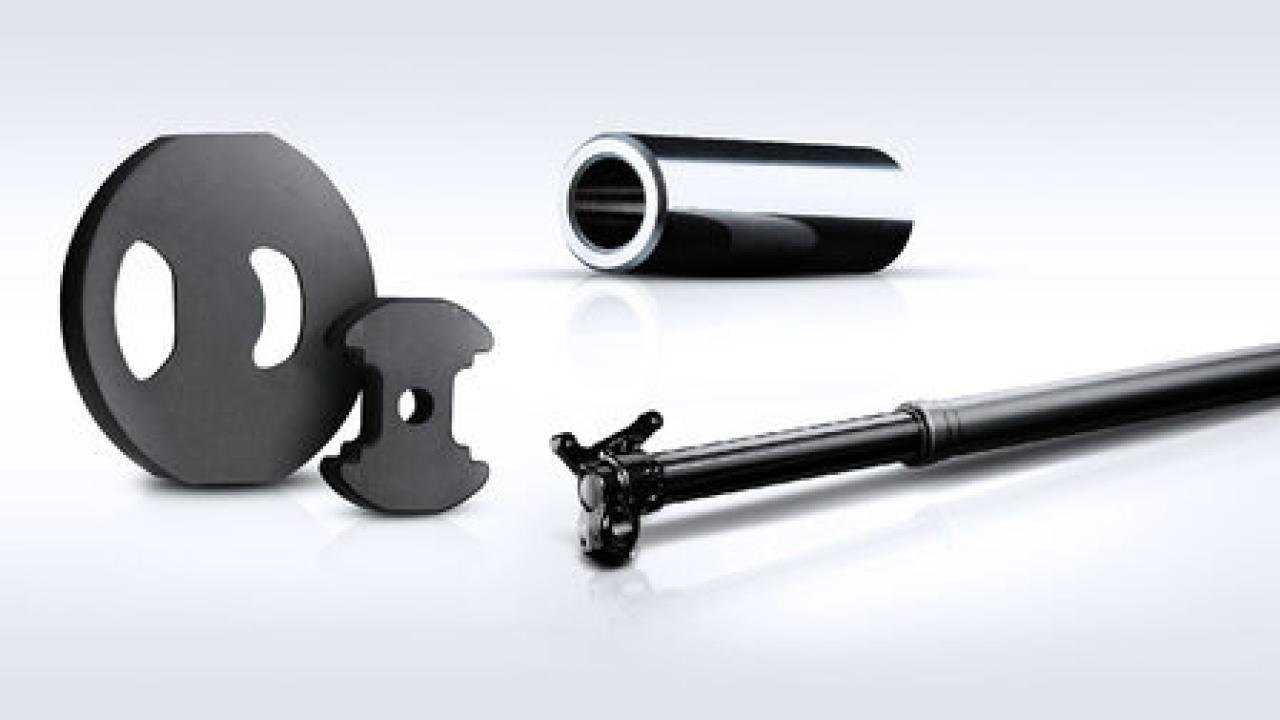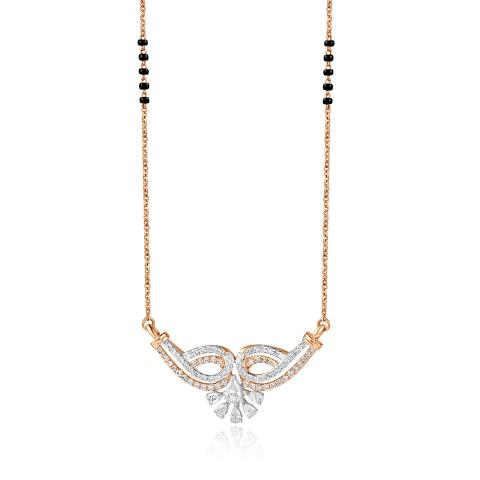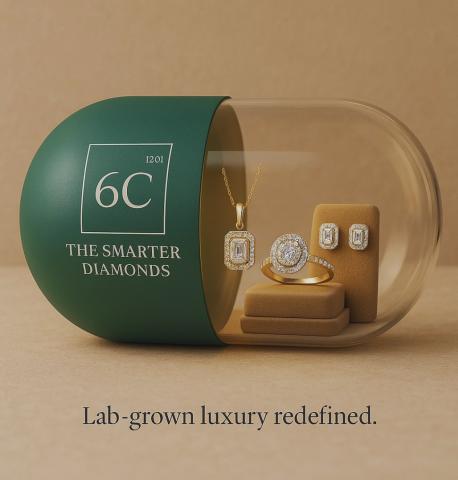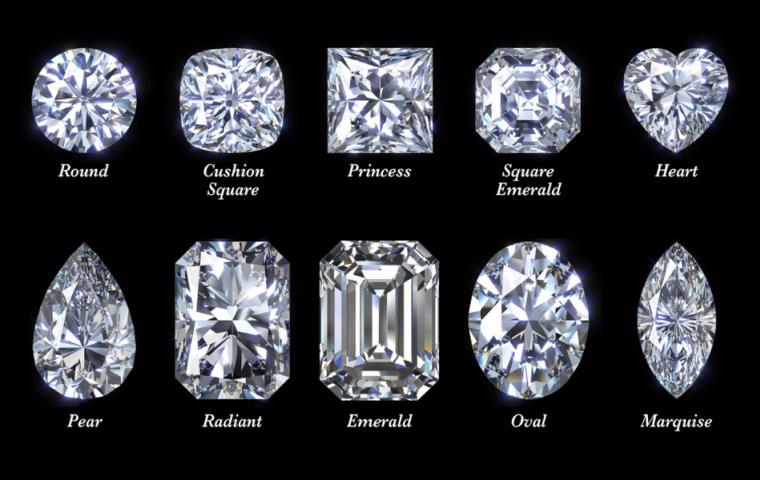Diamond Like Carbon (DLC) is a
versatile material known for its unique combination of properties that mimic the
hardness and resilience of diamond, making it valuable in a wide range of
applications. Composed primarily of carbon atoms, DLC films exhibit a structure
that shares characteristics with both graphite and diamond, giving it
impressive strength, durability, and smoothness. DLC is increasingly being used
in industries such as electronics, automotive, medical devices, and more due to
its advanced mechanical, chemical, and thermal properties.
What
Is Diamond Like Carbon?
Diamond
Like Carbon refers to a family of amorphous
carbon materials that exhibit some of the typical properties of diamond. DLC
films are typically thin and can be deposited on various substrates to enhance
their wear resistance, reduce friction, and increase hardness. The key feature
of DLC is its hybrid structure, which contains both sp2 (graphite-like) and sp3
(diamond-like) carbon bonds. This combination imparts both hardness and
lubricity to the material, making it highly sought after in numerous
engineering and industrial contexts.
DLC coatings can be tailored to
achieve specific properties, such as high hardness, low friction, and chemical
inertness, depending on the ratio of sp2 and sp3 carbon and the presence of
additional elements like hydrogen or metals.
Key
Properties of Diamond Like Carbon
- Hardness and Wear Resistance: One of the standout features of DLC is its remarkable
hardness, which can approach that of natural diamond in some variations.
This hardness provides superior wear resistance, making DLC coatings ideal
for applications where parts are subject to heavy friction or abrasion.
Tools, bearings, and engine components often use DLC to extend their
operational life.
- Low Friction:
DLC has an inherently low coefficient of friction, meaning it reduces the
amount of wear and tear between moving parts. This property is
particularly valuable in applications such as automotive engines and
mechanical components, where reducing friction leads to higher efficiency,
lower energy consumption, and longer lifespan of parts.
- Chemical Inertness:
DLC is chemically inert, meaning it resists corrosion and degradation when
exposed to harsh environments. This makes it ideal for coatings used in
medical devices, chemical processing equipment, and electronics where
exposure to corrosive agents could otherwise damage the underlying
material.
- Biocompatibility:
DLC’s biocompatibility is one of its most important properties in the
medical field. DLC coatings are non-toxic and do not cause adverse
reactions in the body, making them ideal for use in medical implants,
surgical instruments, and prosthetics. This property, combined with its
durability, has led to DLC being used in hip joint replacements, stents,
and other medical devices that require long-term use.
- Optical Transparency:
In addition to its mechanical and chemical properties, some forms of DLC
are optically transparent. This allows DLC to be used as a protective
coating for optical devices, such as lenses and infrared windows, where
both durability and light transmission are essential.
Types
of Diamond Like Carbon
There are several types of DLC
coatings, each with different properties, depending on the method of deposition
and the specific ratio of carbon bonding. The main types include:
- Hydrogenated Amorphous Carbon (a-C): This is the most common type of DLC coating, which
contains both sp2 and sp3 bonds along with hydrogen. The presence of
hydrogen helps to reduce internal stresses in the coating, making it
easier to deposit thicker films. It offers a good balance of hardness and
smoothness and is widely used in automotive and mechanical applications.
- Tetrahedral Amorphous Carbon (ta-C): This type of DLC contains a high percentage of sp3
bonds, resulting in an extremely hard coating that closely mimics natural
diamond. However, ta-C is more difficult to produce and can require more
advanced deposition techniques. It is typically used in applications where
extreme hardness and wear resistance are critical.
- Metal-Doped DLC:
In some cases, metals such as titanium or tungsten are added to DLC
coatings to modify their properties, such as increasing electrical
conductivity or enhancing adhesion to specific substrates. These coatings
are often used in electronics and specialized engineering applications.
Applications
of Diamond Like Carbon
Due to its unique combination of
properties, DLC has found use in a variety of industries:
- Automotive Industry:
DLC coatings are widely used in automotive components such as piston
rings, camshafts, and fuel injection systems. By reducing friction and
wear, DLC coatings help improve the efficiency and longevity of these
parts, resulting in better fuel economy and lower emissions.
- Medical Devices:
The biocompatibility and wear resistance of DLC coatings make them ideal
for use in medical implants and surgical tools. DLC-coated stents, hip
replacements, and other implantable devices benefit from the material's
durability and non-reactivity in the human body, reducing the risk of
complications.
- Electronics:
In the electronics industry, DLC coatings are used to protect sensitive
components from wear and corrosion. For example, hard disk drives (HDDs)
often employ DLC coatings on the disk’s surface to prevent damage from the
read/write heads during operation. DLC’s electrical insulating properties
are also leveraged in certain semiconductor applications.
- Cutting Tools:
DLC-coated cutting tools offer significant advantages in terms of hardness
and low friction. These tools can cut through materials more efficiently
and last much longer than uncoated tools, reducing downtime and increasing
productivity in industries like manufacturing and machining.
- Optics:
Optical lenses and windows, particularly those exposed to harsh
environmental conditions, benefit from DLC coatings. The material’s
durability and optical transparency allow lenses to maintain clarity while
resisting scratches and environmental damage.
The
Future of DLC Technology
As technology advances, new methods
for producing and applying DLC are constantly being developed, allowing for
more cost-effective and versatile coatings. DLC coatings are likely to play an
increasingly important role in the automotive, electronics, and medical
industries as they continue to seek high-performance materials with properties
like wear resistance, biocompatibility, and chemical inertness. The ability to
fine-tune DLC coatings for specific applications will undoubtedly lead to even
broader use in the coming years.
Get More Insights on Diamond Like
Carbon
















